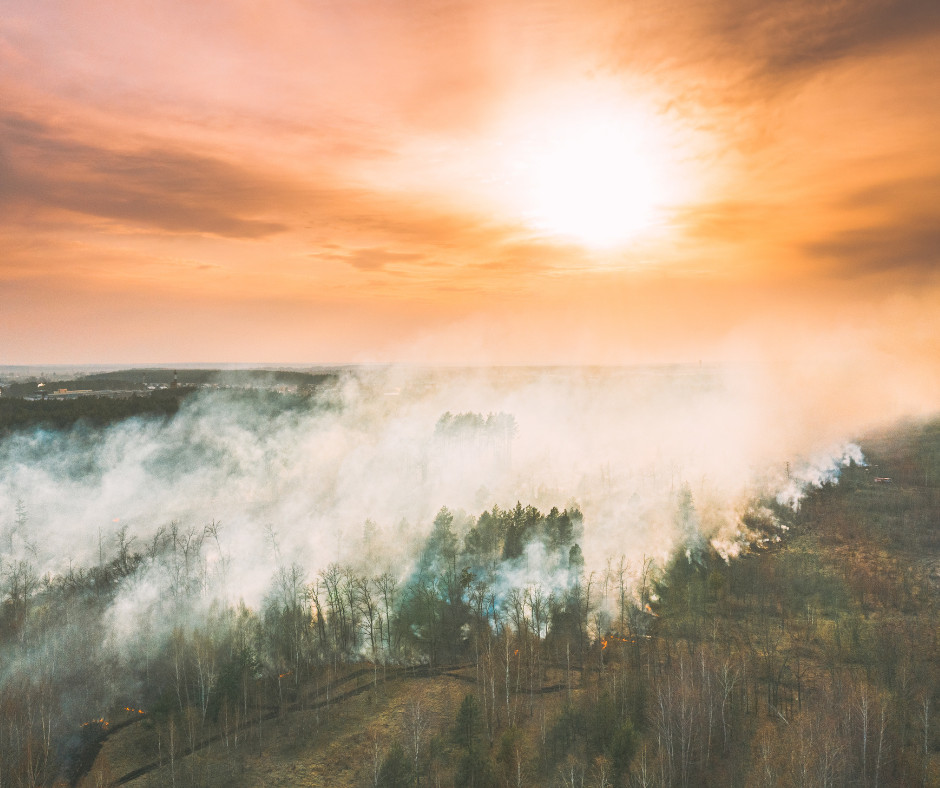Passive House and Bushfires: Prioritising Health, Safety, and Family Wellbeing

You may have come across the recent story from California about a ‘Passive House’ that withstood a raging wildfire while neighbouring homes were tragically reduced to ash. If not, you can read about it here. This story has sparked widespread conversation, and if you’re interested in the topic, we’d like to share our take on it.
While we don’t know the specifics of this particular project and can’t verify all the claims made, it’s a timely reminder of the potential benefits of Passive House design—particularly in the context of health, safety, and fire resilience. Bushfires are a sensitive and deeply personal issue for many Australians, so we approach this topic with the utmost care and respect.
As bushfire season is once again upon us, let’s examine why Passive House principles can make a home more resilient to bushfires, while also improving your family’s health and wellbeing.
What is a Passive House?
Passive House (or Passivhaus) is a voluntary but rigorous building standard designed to create homes that are highly energy-efficient, comfortable, and healthy. These homes adhere to five core principles that ensure superior performance:
- High-performing insulation to maintain comfortable indoor temperatures.
- Airtight construction to prevent drafts and improve energy efficiency.
- Thermal bridge-free design to minimise heat loss.
- Mechanical ventilation with heat recovery (HRV) to provide fresh, filtered air while retaining warmth or coolness.
- High-quality windows and doors for improved efficiency and comfort.
While these principles are focused on energy efficiency, they also provide significant benefits for safety and health—especially in bushfire-prone areas.
Why Did the Passive House in California Survive?
One key feature of Passive House design that most likely contributed to the California home’s survival is its airtight construction. This eliminates gaps and cracks that can allow embers—the primary cause of home ignition during bushfires—to infiltrate the home. Other features that contribute to bushfire resilience include:
- Simplified Design: Passive Houses typically have fewer nooks, overhangs, and articulations where embers can land.
- Compact Surface Area: A smaller exterior surface reduces the area exposed to fire.
- Protective Landscaping: In the California example, non-combustible landscaping, cast-in-place concrete garden walls, and the absence of vegetation near the home added extra protection.
Health Benefits During Bushfires
The benefits of Passive House design extend beyond fire resilience—it also safeguards your family’s health. During a bushfire, smoke and airborne pollutants can severely impact indoor air quality, leading to respiratory issues, especially for vulnerable individuals like children, the elderly, and those with asthma.
In a standard home, the air indoors is often no better than the smoky air outside. However, Passive Houses are equipped with mechanical ventilation with heat recovery (HRV) systems, which continuously filter incoming air, removing a significant portion of smoke and pollutants. This means that even when bushfire smoke fills the outdoor air, a Passive House provides a cleaner and healthier indoor environment.
For an in-depth look at how Passive House design promotes a healthier living space year-round, check out our blog post: Is Passive House a Healthier Home?
HEPA Filters: An Optional Upgrade
While standard HRV systems effectively filter out a large percentage of pollutants, upgrading to hospital-grade HEPA filters can make an even bigger difference. These filters capture finer particles, ensuring the air your family breathes is as clean as possible. Although HEPA filters aren’t yet a standard feature in HRV systems and require separate installation, they’re a worthwhile investment—especially for families with members who have respiratory conditions or allergies.
Rethinking Home Design: Building Smarter
Bushfires also prompt a broader conversation about designing homes that are tailored to actual needs. For instance, many large homes in bushfire-prone areas have unnecessary surface area, increasing their exposure to fire. By designing smarter, more compact homes, you not only reduce fire risk but also lower energy costs and construction expenses.
If you’re in the early stages of designing your dream home, consider reading our blog post: Build Smart: How Home Size Affects Your Budget. It’s full of insights on creating a home that meets your needs without unnecessary waste.
A Holistic Investment in Safety and Wellbeing
Choosing to build a Passive House is more than just an investment in energy efficiency—it’s an investment in the safety, health, and wellbeing of your family.
By focusing on airtight construction, advanced ventilation systems, and smarter design, Passive Houses offer a sanctuary during bushfire season and beyond. They create healthier, more comfortable spaces for your family while providing peace of mind in the face of environmental challenges.
Ready to Build a Healthier, Safer Home?
If you’re considering building or renovating, now is the perfect time to explore the benefits of Passive House design. Whether your focus is fire resilience, improved air quality, or energy efficiency, our team at reimagined habitat is here to help.
Contact us today to learn more about creating a home that prioritises what matters most: your family’s health, safety, and wellbeing. Together, we can design a home that truly protects and nurtures your loved ones.
